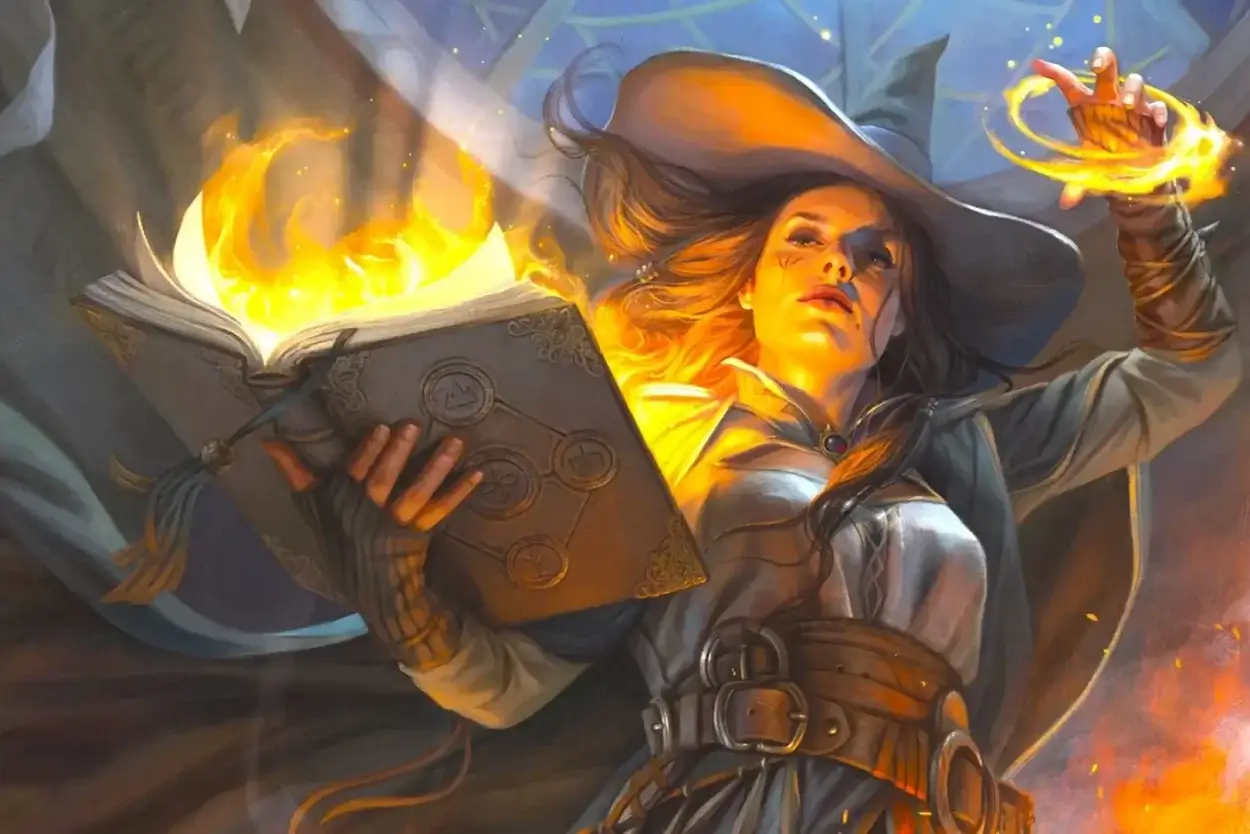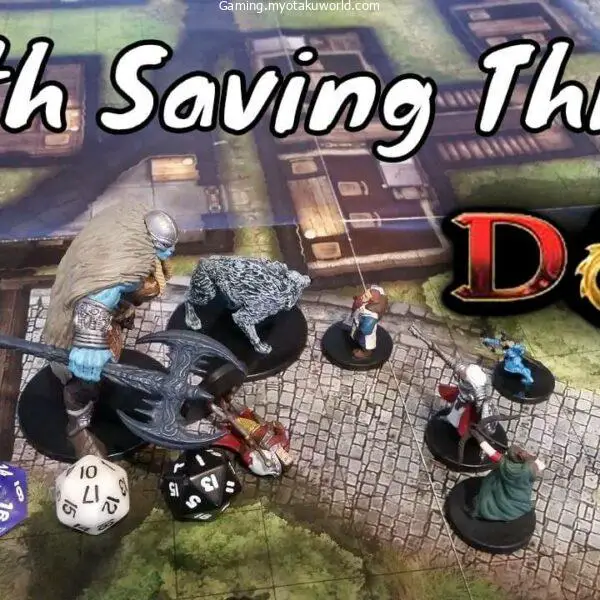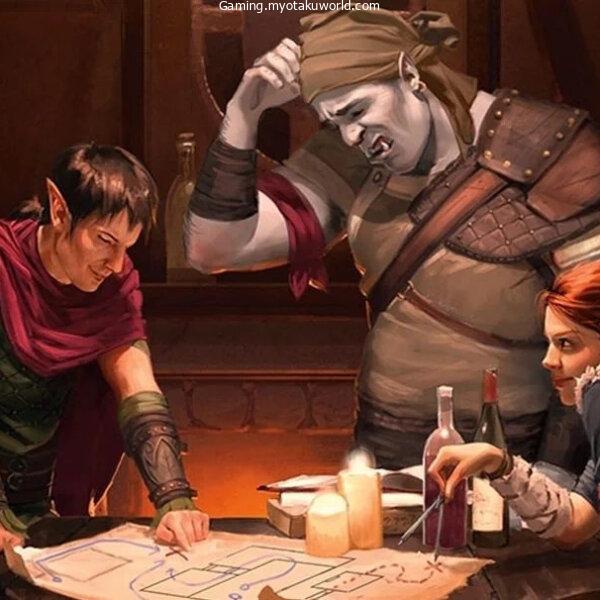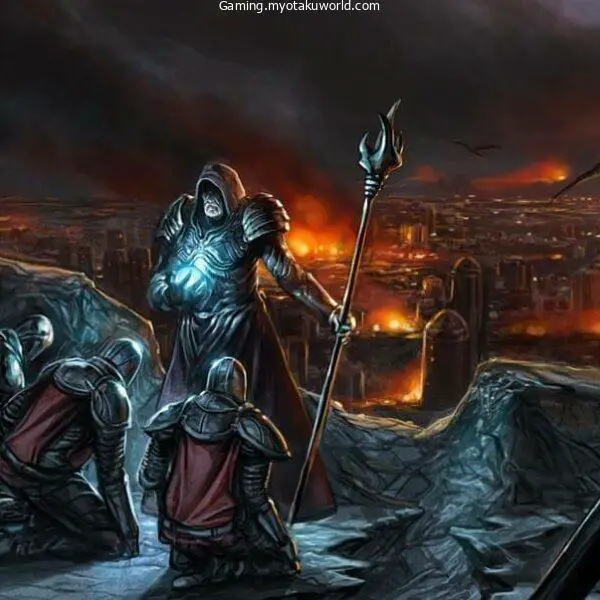Perhaps, it is the most famous magic spell of the game. Fireball can be a wizard’s greatest friend.
Although it was intentionally left powerful and powerful, the spell has maintained its integrity through five generations.
The increased resistance to fire has dampened the ability in certain situations however, it’s thought to be one of the top combat spells for lower levels by the players.
The rules of Fireball can be found within the Players Handbook on page 241.
Fireball 5e

Evocation 3rd Level
Casting Time: 1 Action
The Range: 150 feet
Components: V, S, M (A tiny ball composed of sulfur and bat guano)
Duration Instantaneous
A bright flash of light appears from your finger pointing towards a spot you pick within your range, and then explodes with a low roar, transforming into a blaze of fire.
Any creature within a 20-foot globe that is centered on the same location must make a saving throw.
The target suffers 8d6 fire damage for the failure to save, or half the damage if it succeeds.
The fire spreads out around corners. It also ignites objects that are flammable in the vicinity that aren’t carried or worn.
Higher Levels: If the spell is cast with an apex slot that is 4th or higher level the damage is increased by 1d6 per slot level that is higher than 3rd.
These rules of Fireball provide an obvious benefit: the damage. Rolling 8d6 in the base cast is fairly significant.
The details that go beyond the damage reveal the real benefits. However, In contrast to the single target, it affects the sphere’s radius of 20 feet and also ignites objects that are that aren’t being carried or worn.
The flames can also be seen moving through corners. The lack of dexterity to prevent half damage is an unsatisfying downside.
Is Fireball Good?
Fireball lets the player cause massive damage to the long-range of a zone. It’s possibly the most well-known magic spell used.
It is difficult to locate a wizard who does not have this magic in their book. It is used as the most universal tool used to play the game.
Fighting multiple enemies and destroying buildings or doors and creating huge distractions are all possible when you have Fireball prepared.
The drawback to firing a ball is the fact that you don’t critically strike as an attack on the area of impact.
When you’re rolling 8d6, damage to the base, casting a critical hit isn’t required. Also, the spell comes with the benefit of dexterity for half damage which may reduce the power slightly.
Consider that fire is among the most popular resistors in the game and you’ll see this spell to be balanced and fun to play.
What classes get Fireball?
The most obvious answer to who can benefit from taking advantage of the Fireball magic is to take the classes of wizards and sorcerers.
It is a recognizable spell for both classes and is widely used. Other classes have this Fireball spell, but.
Subclasses with access to the spell are the Eldritch Knight Fighter Arcane Trickster Rogue, Artillerist Artificer the Light Domain Cleric, and Fiend Warlock.
The spell is completely inaccessible for these classes. Although it could be enjoyable to have a rogue run around shooting Fireball on everything and anything, using the spell to perform many of them isn’t feasible or compatible with the character’s concept.
Fireball is a variety of entertaining to use due to the large number of dice that are rolling to deal damage.
It’s a classic spell for arcane casters the reason that it is. It’s been rebalanced for the current version of the game.
It may not be the final battle spell it once was, but it’s still an excellent choice for 3rd level players.
Fireball In One Round Twice?
In the first place, this appears impossible since the rules for the game say:
A spell that is cast using the bonus action is particularly quick. It is necessary to use an extra action during your turn as long as you haven’t had a bonus action during this turn.
It is not possible to cast another spell on your turn unless it’s for a cantrip that has the casting time of one action.
But, there’s no regulation in the manual that says you shouldn’t use two spells on the same game that each has the same casting time for one move.
This seems to be an oversight that is meant to make the game more balanced. It’s possible that a mistake however we need to investigate the possibility.
If you are able to use two actions through an ability, such as action surge, you could create two spells that are 1 action using that additional action.
This is not possible using Haste since it states that the additional action has to include one of the attacks (one weapon attack only) Disengage, Dash, and Hide or Object Interaction.
Action Surge does not provide these particular parameters, but only that the character receives another action.
This implies that a fighter or caster with a minimum level of 2 can use two Fireball spells within a single turn.
Of course, this is subject to interpretation and decision-making by both your DM as well as the game table.
Therefore, before you try to kill all enemies at once, you might you should have a conversation with your opponent.
The Eldritch Knight Fighter gains the ability to cast spells and is equipped with the ability to surge action.
This means that you don’t have to use multiclass to cast two spells during one turn.
It is an untested rule with evidence-based arguments for and against it, so leave it to the rules of your DM.
Is Fireball Hot?
Without making a lot of preposterous assumptions about the physics of the universe and how magic could affect them, it’s difficult to provide a complete answer.
The spell description, however, gives an idea of the intent.
It is a fire that ignites any flammable object in the vicinity that isn’t worn or carried.
This line speaks volumes of the effect that this Fireball spell is intended to create for the surrounding regions.
The objects are not subject to resistance or clarity. If it is ignited, it can be ignited. This means all items that ignite when ignited.
Paper, wood grass, leaves straw and other straws instantly ignite and will be damaged by fire each subsequent time.
The phrase suggests the idea that objects that aren’t burning like metals aren’t at risk of sparks.
That doesn’t mean they don’t exhibit signs of wear or degrading because of the sudden and intense temperatures, however…
It is believed that the Fireball spell is designed to cause destruction. As a DM don’t be afraid to employ this to add some excitement.
Did your wizard cast a fireball in a building filled with bandits?
Find out the time it will take for the timbers supporting the building to be burned through, which would cause the building to collapse over the people within.
Last Words
Fireball is a classic fun spell. It’s intended to create an impact as well as be an energy play in the early levels.
This aspect was specifically kept in this version by the designers.
As a player, use the opportunity to use it whenever you can, and as a DM attempt to let it destroy the goblins or kobolds, at least once.
It’s so fun to play with all the dice, even though they’re only D6s.









